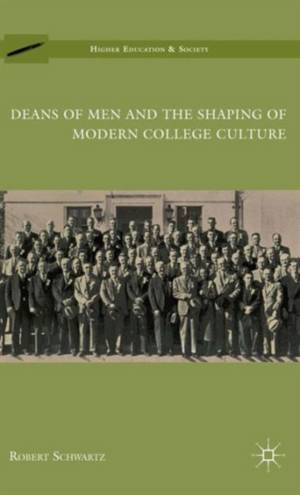
- Afhalen na 1 uur in een winkel met voorraad
- Gratis thuislevering in België vanaf € 30
- Ruim aanbod met 7 miljoen producten
- Afhalen na 1 uur in een winkel met voorraad
- Gratis thuislevering in België vanaf € 30
- Ruim aanbod met 7 miljoen producten
Zoeken
Omschrijving
Deans of men in American colleges and universities were created in the late nineteenth and early twentieth centuries to help manage a growing student population. The early deans often had a personality that allowed them to engage easily with students. Over time, many deans saw their offices increase in size and responsibility. The profession grew slowly but by the 1940's drew several hundred men to annual conferences and many more were members. Deans of men and women were significant figures for college students; many students saw them as the "face" of the college or university. Schwartz traces the role and work of the deans and how they managed the rapidly growing culture of the American college campus in the twentieth century.
Specificaties
Betrokkenen
- Auteur(s):
- Uitgeverij:
Inhoud
- Aantal bladzijden:
- 223
- Taal:
- Engels
- Reeks:
Eigenschappen
- Productcode (EAN):
- 9780230622586
- Verschijningsdatum:
- 19/01/2011
- Uitvoering:
- Hardcover
- Formaat:
- Ongenaaid / garenloos gebonden
- Afmetingen:
- 145 mm x 211 mm
- Gewicht:
- 340 g

Alleen bij Standaard Boekhandel
+ 152 punten op je klantenkaart van Standaard Boekhandel
Beoordelingen
We publiceren alleen reviews die voldoen aan de voorwaarden voor reviews. Bekijk onze voorwaarden voor reviews.








